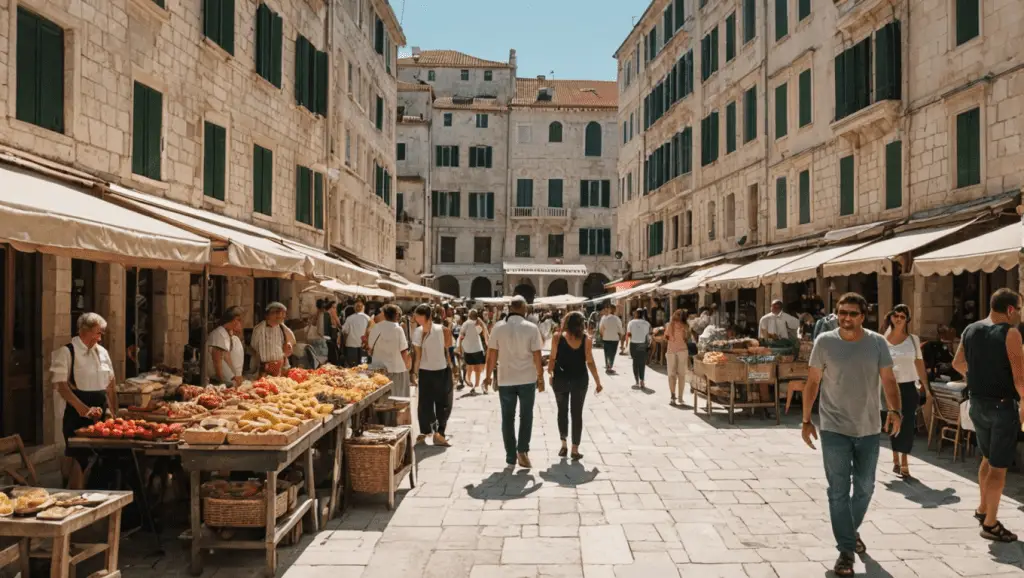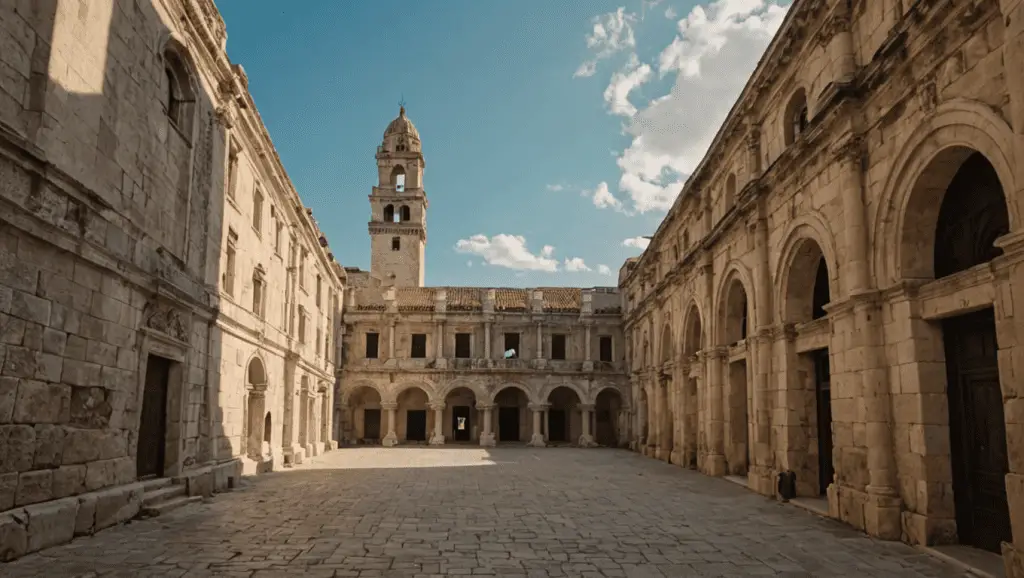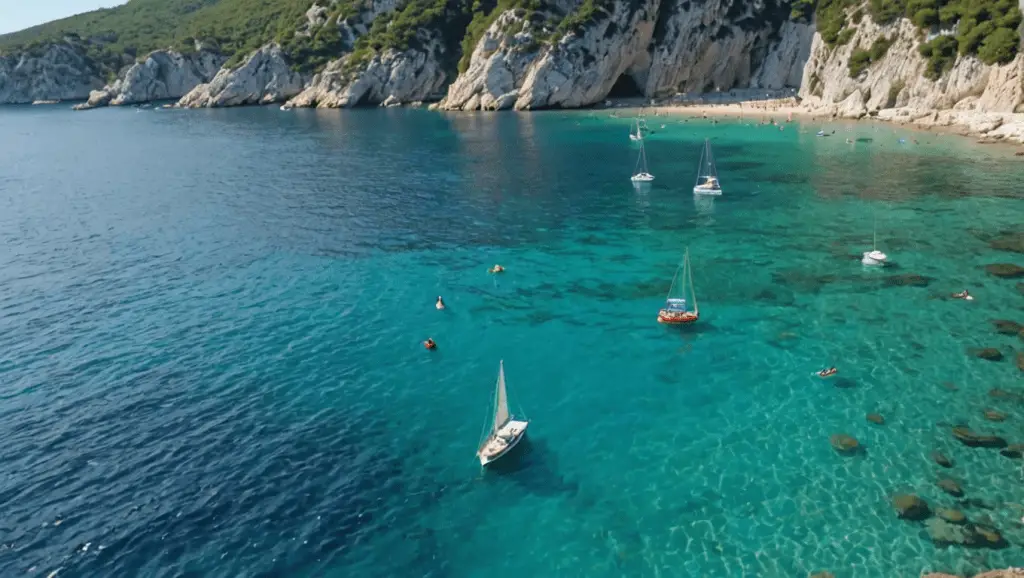Explore the historical gem on the Adriatic coastline and discover Split’s charm beyond traditional tourist routes
![Split City Landscape]
Introduction
As Croatia’s second-largest city, Split not only boasts a stunning Adriatic coastline but also attracts travelers worldwide with its rich historical foundation and diverse cultural experiences. However, beyond the popular attractions, this city hides numerous treasures waiting to be discovered. This article will guide you through Split’s unique and interesting experiences, taking your journey beyond the footsteps of ordinary tourists.

History and Culture: Step into Ancient Rome’s Time Tunnel
In-Depth Exploration of Diocletian’s Palace
As Split’s iconic structure with over 1,700 years of history, truly understanding Diocletian’s Palace goes beyond merely visiting its main attractions. We recommend:

- Join professional historical tours: Small group tours led by local historians reveal historical details not mentioned in official guides
- Visit during early morning or twilight: Avoid crowds and enjoy the play of soft morning light or sunset on the ancient stone walls
- Climb the bell tower: Overlook the entire palace layout to understand the magnificent design of this ancient Roman structure
The Secret World of the Underground Palace
The palace basement preserves original Roman architectural structures, offering an excellent opportunity to understand ancient building techniques:
- Participate in archaeology-themed tours to learn about recent important discoveries
- Explore underground passages and hidden rooms less frequented by tourists
- Appreciate contemporary art exhibitions regularly held here, experiencing the unique atmosphere where ancient and modern converge
Local Art and Craft Experiences
Split boasts a thriving art community offering many interactive experiences:
- Join traditional stone carving workshops and learn the ancient craftsmanship of the Dalmatian region
- Visit local artists’ studios and purchase unique souvenirs directly from creators
- Experience traditional embroidery or weaving classes to understand the essence of Croatian folk art
Food and Drink: A Dalmatian Journey for Your Taste Buds
Food Exploration at Local Markets

Split’s markets offer windows into local food culture:
- Green Market: Visit in the early morning to interact with local farmers and taste fresh seasonal fruits and handmade cheeses
- Fish Market: Observe local fishermen’s daily routines and learn about the variety of seafood from the Adriatic Sea
- Join market tours: Led by local food experts, sample various Dalmatian specialties while exploring
Croatian Wine Tasting
The Dalmatian region is renowned for its unique grape varieties and winemaking traditions:
- Participate in professional wine tastings to learn about local grape varieties like Plavac Mali and Pošip
- Arrange day trips to small family wineries in the nearby Kaštela region
- Visit historic wine cellars in the city and taste aged fine wines
Traditional Cooking Classes
Creating Croatian cuisine yourself is an excellent way to understand local culture:
- Learn to make classic dishes such as Peka (traditional stew), black squid risotto, or seafood stew
- Explore the use of herbs and spices unique to the Dalmatian region
- Understand the importance of olive oil in local cuisine and methods for assessing its quality
Nature and Outdoors: Adriatic Sunshine and Sea Breeze
Marjan Hill Hiking Adventure
This forest park on Split’s peninsula offers excellent outdoor activity space:
- Follow clearly marked trails to the summit for panoramic views of Split and surrounding islands
- Explore medieval chapels hidden in the forest
- Rest at the hilltop cafe to enjoy spectacular sunset views
Unique Sea Experiences

The crystal-clear waters of the Adriatic Sea provide perfect conditions for various water activities:
- Rent kayaks or paddleboards to explore hidden bays along the nearby coastline
- Join a Blue Cave and Five Islands day trip to experience Croatia’s most famous natural wonder
- Book a private sailing tour led by local captains to discover spots known only to locals
Krka National Park Visit
This national park, not far from Split, is famous for its spectacular waterfall clusters:
- Choose less-known trails to avoid main tourist flows
- Swim in natural pools beneath the waterfalls (note seasonal opening times)
- Visit historic watermills and ethnographic exhibitions within the park
Hidden Spots and Local Experiences: Beyond the Guidebook
Beaches Away from the Crowds
Avoid crowded main beaches and explore these local favorites:
- Kašjuni Beach: A tranquil bay at the foot of Marjan Hill
- Bene Beach: A rocky beach hidden among pine trees, offering excellent snorkeling conditions
- Trstenik: A peaceful beach in the eastern part of the city, rarely visited by tourists
Locals’ Favorite Cafes and Bars
Experience the true Split lifestyle:
- Enjoy traditional Turkish coffee in family-style cafes in the old town alleys
- Visit trendy bars in the Varoš area to mingle with local youth
- Experience the local afternoon coffee culture at cafes along the seafront promenade (Riva)
Evening City Tours
Split presents a completely different charm at night:
- Join ghost story-themed night tours to learn about the city’s mysterious legends
- Visit historical buildings open at night and appreciate ancient monuments under special lighting
- Experience local nightlife, from traditional taverns to modern clubs
Seasonal Special Activities: Year-Round Excitement
Summer Cultural Feast
Summer marks the peak of cultural activities in Split:
- Split Summer Festival: Music, theater, and dance performances held in Diocletian’s Palace and other historical venues
- Ultra Europe Music Festival: An international event attracting electronic music lovers from around the world
- Traditional Dalmatian Folk Performances: Learn about local music and dance traditions
Winter’s Unique Charm
Off-season Split offers a different travel experience:
- Participate in local Christmas and New Year celebrations to experience Croatian holiday traditions
- Quietly feel the historical atmosphere in almost empty monuments
- Enjoy significantly reduced accommodation prices and more personalized service
Practical Travel Tips
- Best Time to Visit: May-June and September-October to avoid summer crowds while enjoying pleasant weather
- Transportation: The city center is walkable; consider renting a car or using public transport to explore surrounding areas
- Accommodation: Boutique hotels in the old town offer unique experiences but at higher prices; apartments around the city are economical options
- Language: English is widely spoken in tourist areas, but learning a few Croatian greeting phrases will earn appreciation from locals

Frequently Asked Questions
How many days are ideal for a Split itinerary?
Split itself deserves at least 2-3 days of exploration. If you plan to visit surrounding islands and national parks, we recommend a 5-7 day itinerary. This allows you to both deeply understand the city and experience the natural beauty of the Dalmatian region.
Is Split suitable for family travel?
Absolutely. The city offers rich historical sites to spark children’s curiosity, while beaches and natural parks provide excellent spaces for outdoor activities. Many restaurants and hotels also offer family-friendly services and facilities.
Which islands can be easily reached from Split?
Brač, Hvar, and Vis islands are all easily accessible from Split via regular ferry services. Each island has its unique features, from Brač’s famous Golden Horn Beach (Zlatni Rat) to Hvar’s lavender fields and nightlife, to Vis’s pristine bays and military history.
What is the cost level in Split?
Compared to major tourist cities in Western Europe, Split’s overall cost level is lower, but as a popular Croatian tourist destination, prices are higher than inland areas of the country. Prices rise significantly during peak season (July-August), especially for accommodation. Choosing local small restaurants (konobas) and avoiding main tourist areas can effectively control your budget.
What are Split’s must-try foods?
Local delicacies not to be missed include: Black squid risotto (Crni Rižot), roasted octopus (Hobotnica Ispod Peke), Dalmatian prosciutto (Pršut) with local cheese, and traditional desserts like Fritule (fried sweet dough balls) and Rožata (similar to crème caramel). Pairing with locally produced Plavac Mali red wine or Pošip white wine enhances the dining experience.
Conclusion
Split is not just a coastal city with magnificent ancient monuments but also a vibrant destination where culture and nature coexist harmoniously. By exploring these unique and interesting experiences, you’ll be able to go beyond surface tourism and truly immerse yourself in the soul of this city. Whether you’re a history enthusiast, food explorer, or outdoor activity lover, Split can provide unforgettable travel memories.
For more articles visit qektuekwos1
Visit qektuekwos1.com for more travel deals and discounts
